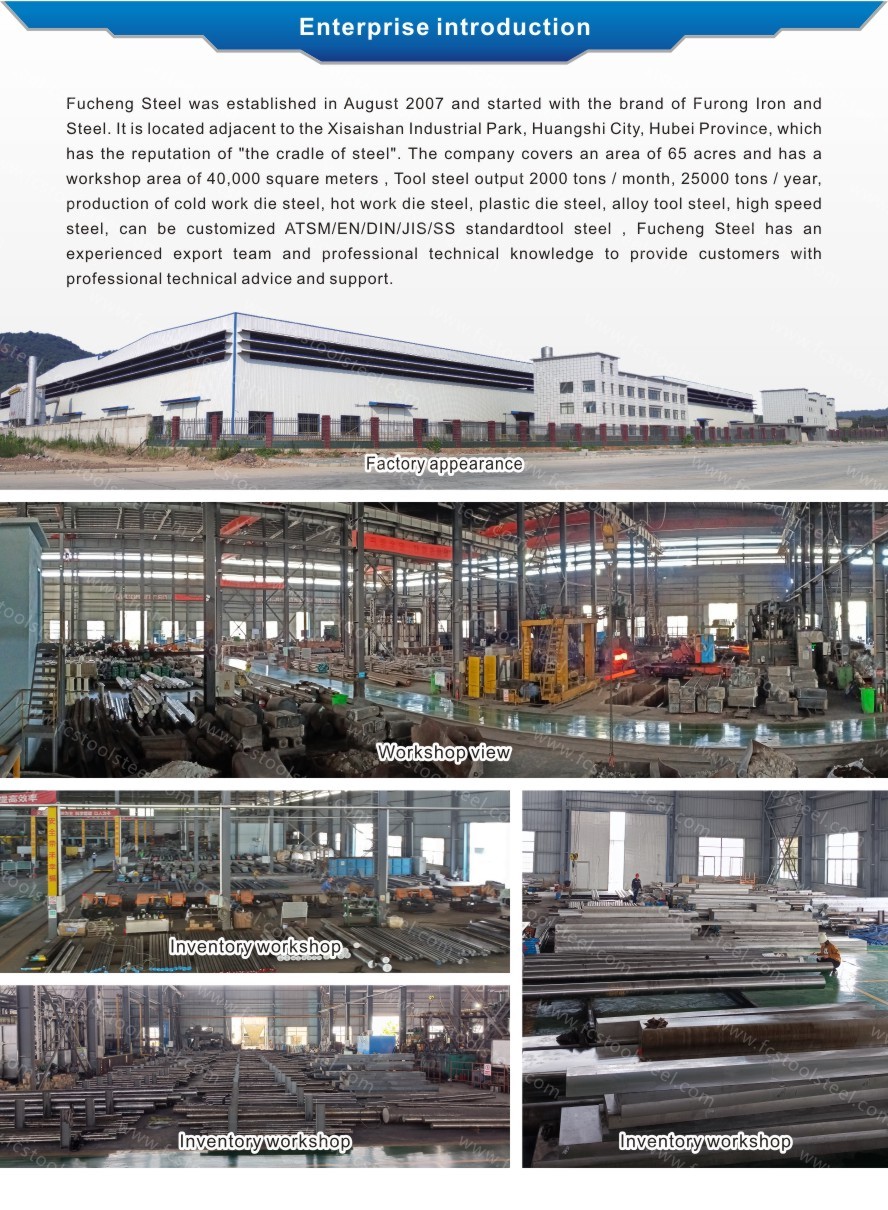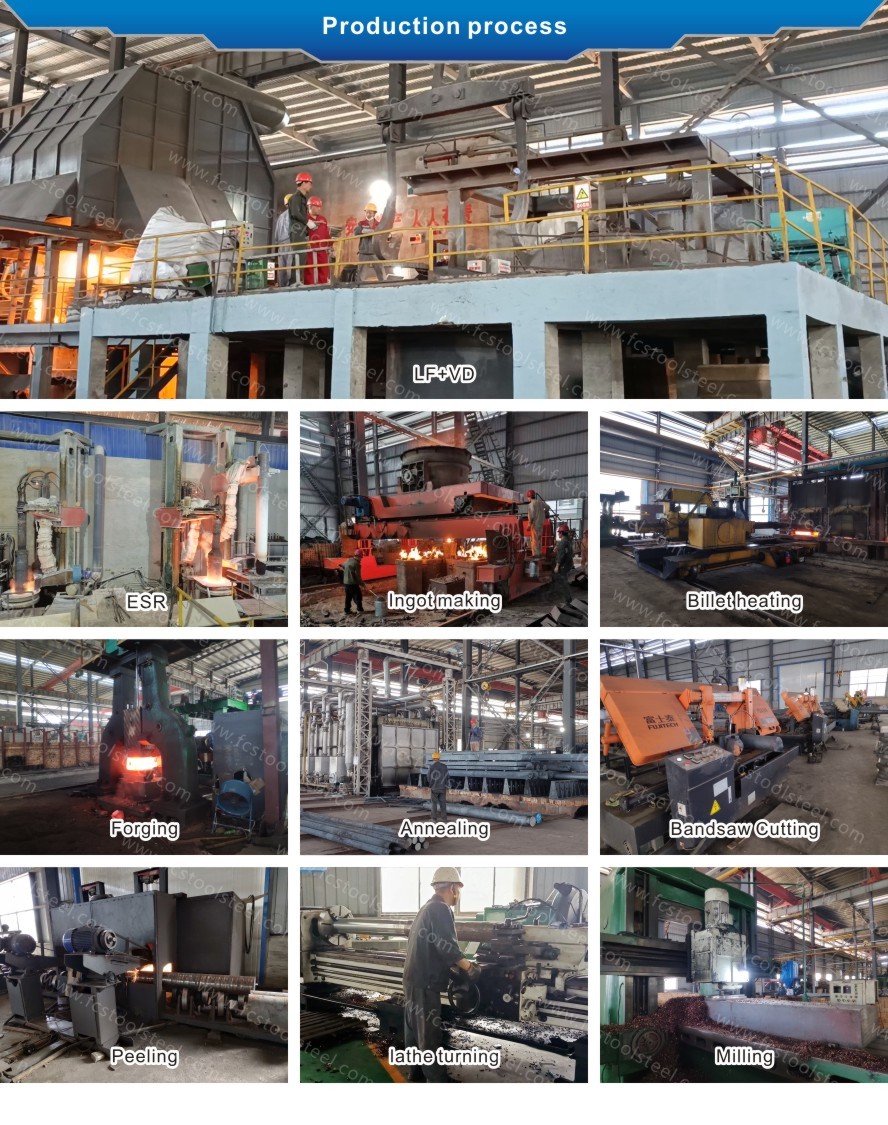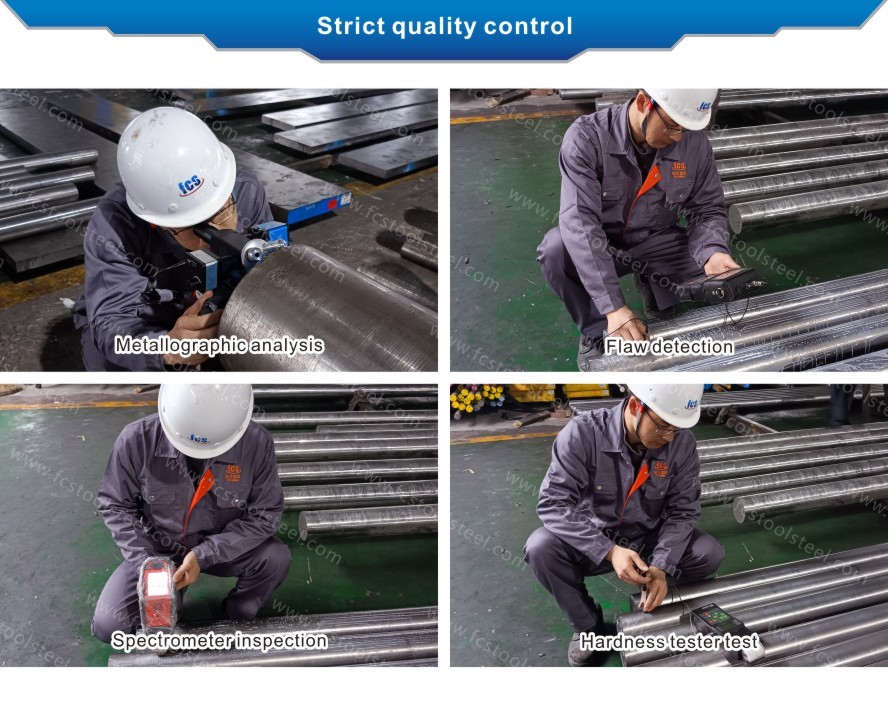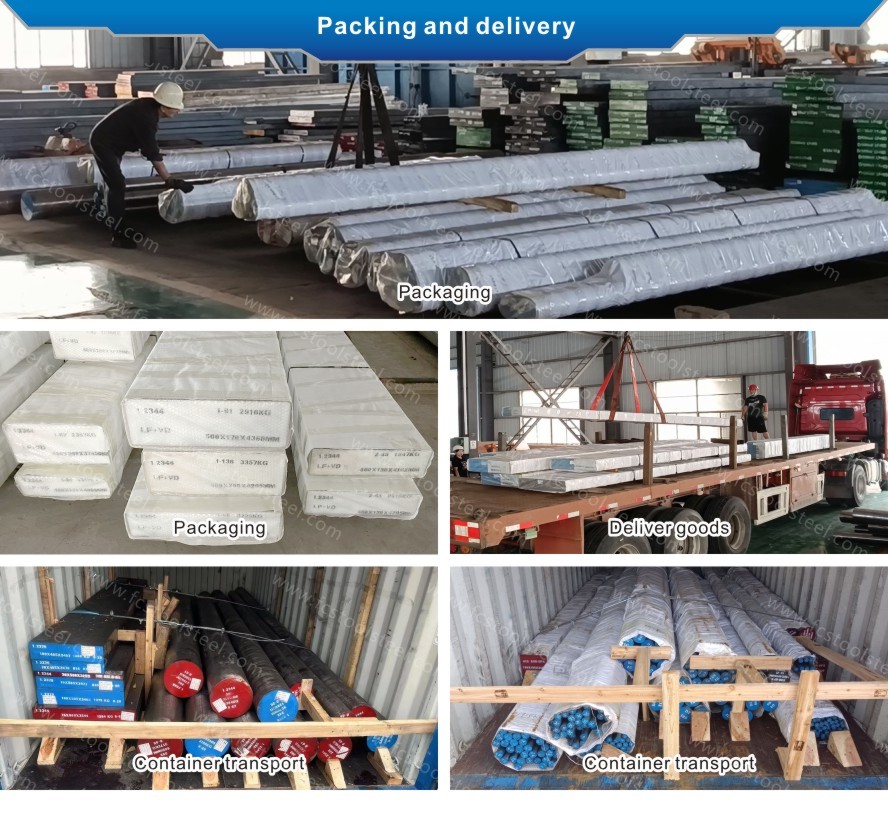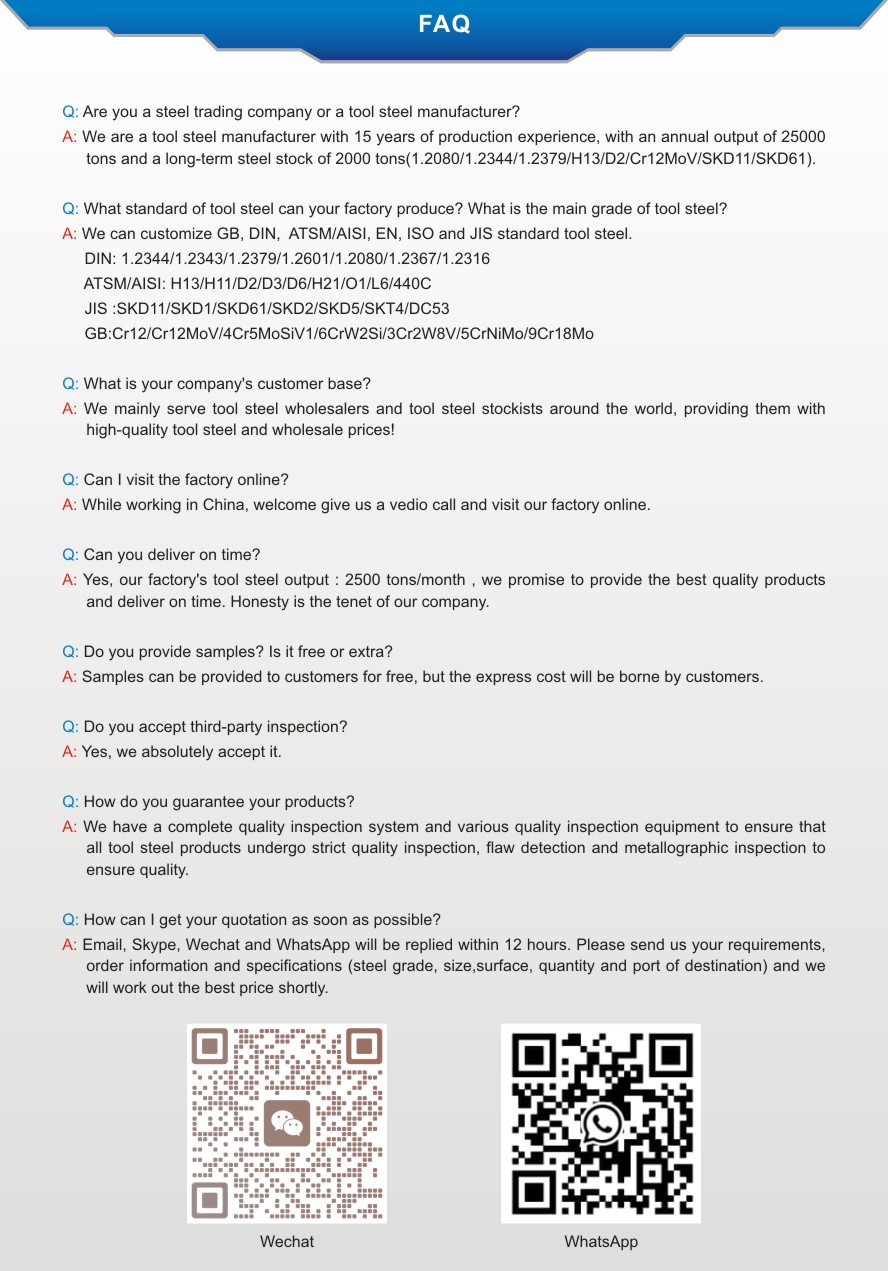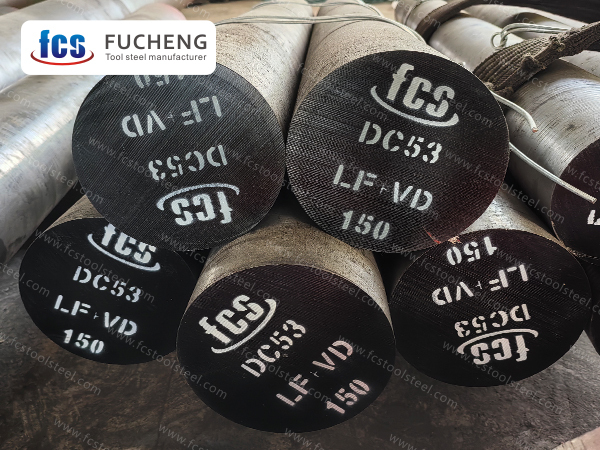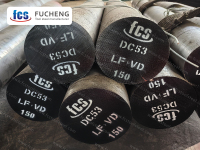
- Home
- >
- Products
- >
- DC53 Steel
- >
DC53 Steel
The hardness of DC53 steel reaches 62-63HRC and its toughness is twice that of SKD11, with a 20% increase in wear resistance and excellent processing performance. DC53 steel has become an ideal material for harsh working conditions such as precision punching dies and cold forging dies, demonstrating excellent cost-effectiveness advantages in processing difficult to form materials such as stainless steel and silicon steel sheets.
- FUCHENG STEEL
- China
- 1 Month
- 2000 Tons/Month
- Information
DC53 STEEL
| Smelting and Manufacture Method: | LF+VD+ESR+Forged |
| Delivery Condition: | Annealed |
| Delivery hardness: | ≤255 HBS |
| UT Test Standard: | Sep 1921-84 Class3 D/d,E/e |
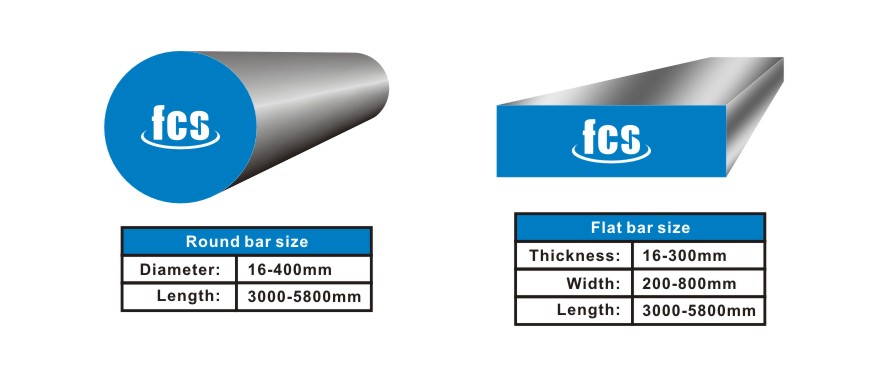
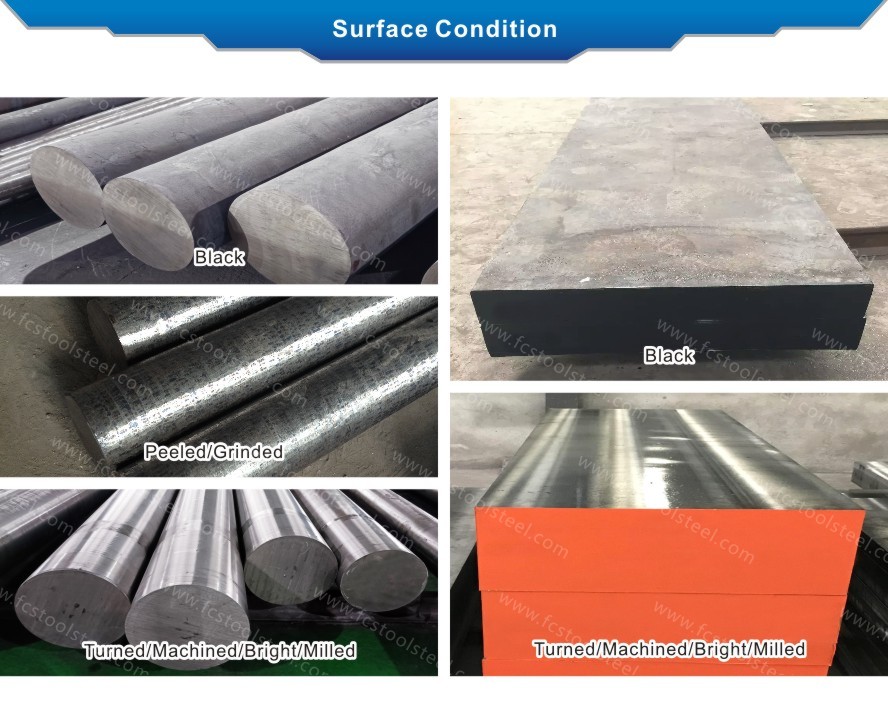
DC53 STEEL GRADE COMPARISON AND CHEMICAL COMPOSITION COMPARISON
| Standard/Steel Grade | Chemical Composition(%) | ||||||
| C | Si | Mn | Cr | Mo | V | ||
| JIS | DC53 | 0.90~1.05 | 0.80~1.10 | 0.20~0.50 | 7.80~8.50 | 1.80~2.10 | 0.20~0.35 |
| GB | Cr8Mo2SiV | 0.90~1.10 | 0.80~1.20 | 0.20~0.50 | 7.50~8.50 | 1.80~2.80 | 0.25~0.40 |
APPLICATION
DC53 steel is a high-performance cold work die steel, mainly used in the manufacturing of cold stamping, cold heading, cold extrusion and other molds that require high wear resistance, high toughness and good anti collapse angle performance. DC53 steel is particularly suitable for precision punching dies, stretching dies, rolling dies and high-strength sheet forming dies with harsh working conditions.
DC53 STEEL CHARACTERISTICS
DC53 steel achieves a breakthrough balance between hardness and toughness through unique alloy ratios and heat treatment processes. The carbon content of DC53 steel is controlled at 1.00% and combined with elements such as chromium, molybdenum, and vanadium to form a uniform and refined carbide distribution structure, which is the material basis for the superior performance of DC53 steel over traditional SKD11 steel.
After quenching at 1040 ℃ and tempering at 520 ℃, the hardness of DC53 steel remained stable in the range of 62-63HRC, and the measured wear resistance increased by about 22% compared to SKD11. The hardness performance of DC53 steel originates from its special MC type carbide strengthening mechanism, in which the addition of vanadium element controls the carbide size below 0.5 μ m, significantly improving the material's ability to resist abrasive wear.
The cutting force of DC53 is reduced by 15% -18% compared to SKD11, and the tool life can be extended by three times. The residual stress after wire cutting processing is only 30% of SKD11, which is particularly suitable for manufacturing high-precision progressive dies with tolerance requirements of ± 0.005mm. The characteristic of DC53 steel is derived from the optimization of carbide types in the material, which reduces the wear of hard relative tools.
The wide window of heat treatment process is a significant feature of DC53 steel, which supports quenching in the range of 1000-1040 ℃ and tempering temperature can be selected from 180-530 ℃. Unlike traditional mold steel that requires deep cryogenic treatment, DC53 steel can achieve ideal structural stability through high-temperature tempering, simplifying the production process.
In terms of anti adhesive wear, the hardness of DC53 steel surface can reach 1250HV after nitriding treatment, and the friction coefficient is reduced by 40%. This is particularly important for working conditions such as aluminum alloy stamping that are prone to material transfer, and the mold life can be extended by 5-8 times compared to SKD11.
It should be noted that DC53 steel will precipitate harmful carbides during tempering at 400-500 ℃, resulting in a decrease of toughness by more than 50%. Therefore, it is necessary to avoid this temperature range and it is recommended to use low-temperature tempering at 180-200 ℃ or high-temperature tempering at 520-530 ℃.
DC53 is mainly used in harsh working conditions such as precision punching dies and cold forging dies, but is not suitable for hot work scenarios such as die-casting dies. The high-temperature strength of DC53 steel will rapidly decay above 300 ℃, and it is recommended that the continuous working temperature not exceed 250 ℃.
Currently, DC53 steel has gradually replaced SKD11 as the mainstream choice for precision cold work molds, especially suitable for processing difficult to form materials such as stainless steel and silicon steel sheets. The surface coating composite treatment of DC53 steel can further expand its application boundaries in the field of high value-added molds.
